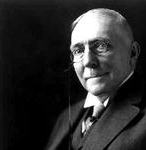Biography

James Whitcomb Riley was an American writer and poet who born on October 7, 1849 in Greenfield, Indiana, USA, the third of the six children of Reuben Andrew and Elizabeth Marine Riley. Riley's father was an attorney, and in the year before Riley's birth, he was elected a member of the Indiana House of Representatives as a Democrat. He developed a friendship with James Whitcomb, the governor of Indiana, after whom he named his son. Martin Riley, Riley's uncle, was an amateur poet who occasionally wrote verses for local newspapers. Riley was fond of his uncle who helped influence his early interest in poetry. He was known by the pseudonyms Jay Whit, Benjamin F. Johnson, and Uncle Sidney. During his lifetime he was titled the Hoosier Poet, National Poet, and Children's Poet. He began his career in 1875 writing verses in nineteenth century Hoosier dialect for the Indianapolis Journal. His poems tended to be humorous or sentimental, and of the approximately one thousand poems that Riley published, over half are in dialect. Riley's style was significantly influenced by Robert Burns, to whom he was compared by many critics.
Initially finding it difficult to earn an income as a poet, Riley gradually rose in national prominence during the 1880s through his reading tours.
He began submitting his poems to more prominent literary magazines, including Scribner’s Monthly, but was informed that although he showed promise, his work was still short of the standards required for use in their publications. Even his contacts at the Indianapolis Journal refused to accept his poetry because of the Poe plot leaving Riley desperate for income. In January 1878, Riley paid an entrance fee to join a traveling lecture circuit. In exchange, he received a portion of the profit his performances earned. Such circuits were popular at the time, and Riley quickly earned a local reputation for his entertaining readings.
In August 1878, Riley followed Indiana Governor James D. Williams as speaker at a civic event in a small town near Indianapolis. He recited a recently composed poem, "A Childhood Home of Long Ago," telling of life in pioneer Indiana. The poem was well received and was given glowing reviews in several newspapers.
He traveled a circuit with humorist Edgar Wilson Nye and author Douglass Sherley, holding shows and sharing the stage with other well known talents including Samuel Clemens. Regularly struggling with his alcohol addiction, Riley never married or had children, and was involved in a scandal in 1888 when he became too drunk to perform. He became more popular in spite of the bad press he received, and as a result extricated himself from poorly negotiated contracts that limited his earning; he quickly became very wealthy.
Riley became a bestselling author beginning in the 1890s and earned a steady income from royalties. His children's books were illustrated by the popular illustrator Howard Chandler Christy. He continued to hold occasional reading shows until 1910 when a stroke paralyzed his right arm; afterward he read only at civic events until his 1916 death. His death made national news and his bier was attended by thirty-five thousand; he is buried at the highest point in Indianapolis at the top of Crown Hill Cemetery.
Riley's chief legacy was his influence in fostering the creation of a midwestern cultural identity. Along with other writers of his era, he helped create a caricature of midwesterners and formed a literary community that rivaled the established eastern literati in popular works. During his lifetime he met and befriended many bestselling Indiana authors including Booth Tarkington, George Ade and Meredith Nicholson. Riley achieved a level of fame during his own lifetime that has remained unmatched by other American poets during their own lifetimes. He was honored with annual Riley Day celebrations in many part of the United States and was regularly called on to speak at national civic events. There are many memorials dedicated to Riley, including the James Whitcomb Riley Hospital for Children.
Last updated June 29, 2011



